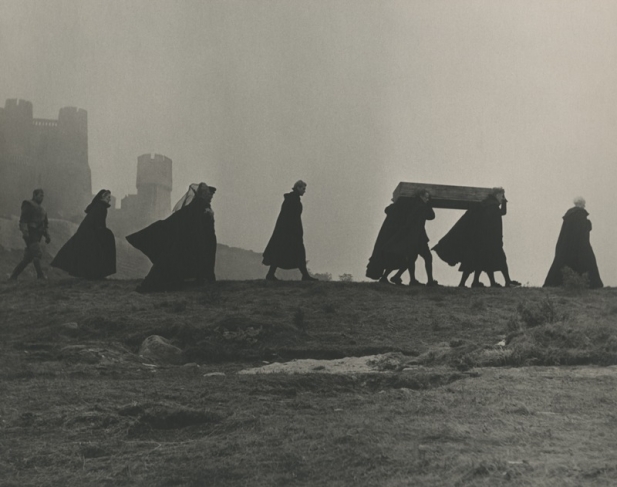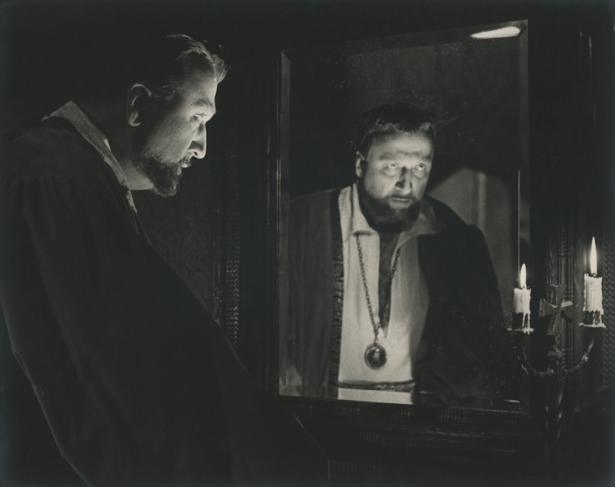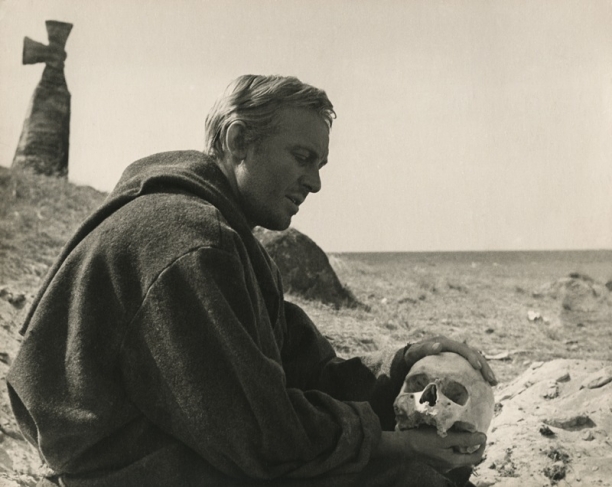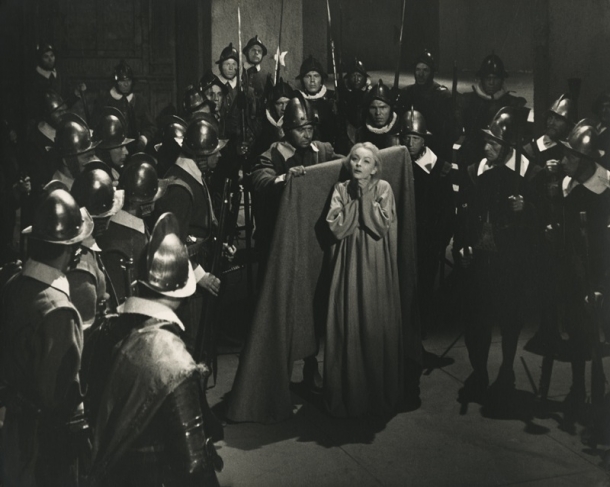At the shooting of Grigory Kozintsev’s “Hamlet” movie
Moscow, 7.03.2012—17.04.2012
exhibition is over
Share with friends
Curator: Mikhail Sidlin
For the press
‘Cut! End of shoot!’ declares the director. ‘Just a minute!’ counters the photographer, requesting that the actors recreate the scene, one more time. For him.
The film photographer has one of the most overlooked professions in photography. Paradoxically, everyone sees the results of his work. And these results are often presented in advertising as ‘movie stills’. Although what the print media call ‘movie stills’ are rarely just that. For instance, the exhibits by Boris Reznikov include vertical frames that are technically impossible on actual reels of film.
Yuri Lotman differentiates ‘movie stills’ and ‘stills from a movie’. He calls a ‘still from a movie’ a technical photograph on a reel of film with duration of 1/24 of a second, which is beyond the bounds of human perception as an individual image. A ‘movie still’ is a dynamic unit consisting of several ‘stills from a movie’ — what the audience really sees on the screen. This is the minimal semantic constituent of film language.
The process of photography differs radically from the process of cinematography. No film photograph can be the simple imprint of a cinematographic image. Even if we are looking at a printed technical still from a film negative — on becoming a photograph it acts in a completely different way to the same ‘still from a film’ on the screen. On the screen a single technical shot always acts among a series of other shots. Once it becomes a photograph it is separate from the surrounding shots. Its semantic significance is altogether different.
Another distinction can be seen in the phrases ‘film scene’ and ‘scene from a film’. If it is customary to use the term ‘film scene’ to refer to a minimal unit of dramatic art, the story in miniature that the filmgoer sees on the screen as a form of consecutive development, ‘scene from a film’ is the static unit a viewer sees in printed or electronic media. This ‘scene from a film’, comprising as our first banal perception the imprint of a cinematographic image, contains in itself the essence of a dramatic conflict condensed by the language of photography. And it is constructed by the photograph.
The cameraman needs time for a showing in order to tell the story, but the photographer only needs space for the image. This is the main difference in their respective tasks.
The photographer condenses time. We see Hamlet’s sword as a blurred image in
A ‘scene from a film’ is photographic sculpture. Hence the work of the cinematographic photographer consists of constructing an added dimension in relation to the cinematographic still. He inevitably introduces supplementary elements of dramatisation, so the photographic still acquires a theatrical effectiveness of its own. The elements used to depict such a sculpture are the actors and their relationship in the scene. A certain grandeur alien to theatricality is characteristic of cinematographic photography. The heroes’ faces and their dramatic conflicts are frozen.
The acme of style for the film photographer is to present the viewer with an entire scene cemented on the plane of a photographic still. And moreover, to present it so that the dramatic tension of the photograph harmonises not only with the work of the cameraman, but also that of the scriptwriter, and meanwhile the figure of the photographer himself must pass unnoticed. This is Boris Reznikov’s achievement. Consequently his figure remains completely unseen, in the shadow of great director and screenwriter Grigori Kozintsev.






















